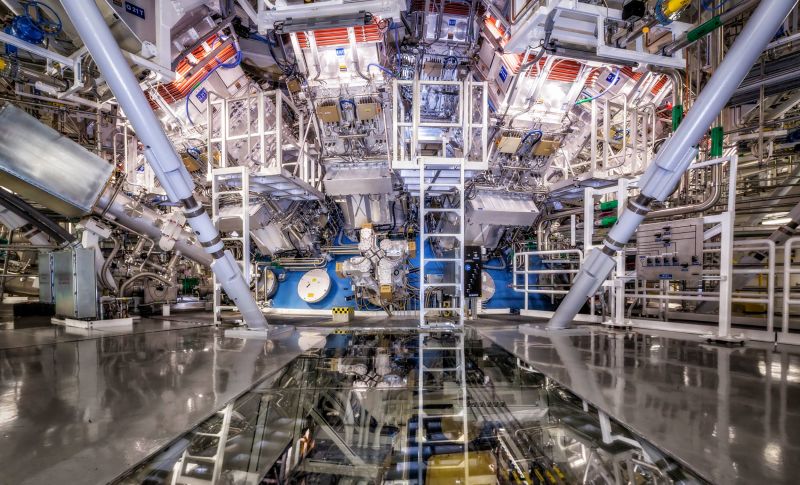Scientists in California shooting nearly 200 lasers at a cylinder holding a fuel capsule the size of a peppercorn have taken another step in the quest for fusion energy, which, if mastered, could provide the world with a near-limitless source of clean power.
Last year on a December morning, scientists at the National Ignition Facility at the Lawrence Livermore National Laboratory in California (LLNL) managed, in a world first, to produce a nuclear fusion reaction that released more energy than it used, in a process called “ignition.”
Now they say they have successfully replicated ignition at least three times this year, according to a December report from the LLNL. This marks another significant step in what could one day be an important solution to the global climate crisis, driven primarily by the burning of fossil fuels.
For decades, scientists have attempted to harness fusion energy, essentially recreating the power of the sun on Earth.
After making their historic net energy gain last year, the next important step was to prove the process could be replicated.
Brian Appelbe, a research fellow from the Centre for Inertial Fusion Studies at Imperial College London, said the ability to replicate demonstrates the “robustness” of the process, showing it can be achieved even when conditions such as the laser or fuel pellet are varied.
Unlike nuclear fission — the process used in the world’s nuclear plants today, which is generated by the division of atoms — nuclear fusion leaves no legacy of long-lived radioactive waste. As the climate crisis accelerates, and the urgency of ditching planet-heating fossil fuels increases, the prospect of an abundant source of safe, clean energy is tantalizing.
Nuclear fusion, the reaction that powers the sun and other stars, involves smashing two or more atoms together to form a denser one, in a process that releases huge amounts of energy.
There are different ways of creating energy from fusion, but at NIF, scientists fire an array of nearly 200 lasers at a pellet of hydrogen fuel inside a diamond capsule the size of a peppercorn, itself inside a gold cylinder. The lasers heat up the cylinder’s outside, creating a series of very fast explosions, generating large amounts of energy collected as heat.
The energy produced in December 2022 was small — it took around 2 megajoules to power the reaction, which released a total of 3.15 megajoules, enough to boil around 10 kettles of water. But it was sufficient to make it a successful ignition and to prove that laser fusion could create energy.
Since then, the scientists have done it several more times. On July 30, the NIF laser delivered a little over 2 megajoules to the target, which resulted in 3.88 megajoules of energy — their highest yield achieved to date, according to the report. Two subsequent experiments in October also delivered net gains.
“These results demonstrated NIF’s ability to consistently produce fusion energy at multi-megajoule levels,” the report said.
There is still a very long way to go, however, until nuclear fusion reaches the scale needed to power electric grids and heating systems. The focus now is on building on the progress made and figuring out how to dramatically scale up fusion projects and significantly bring down costs.
At the COP28 climate summit in Dubai, US climate envoy John Kerry launched an international engagement plan involving more than 30 countries with the aim of boosting nuclear fusion to help tackle the climate crisis.
“There is potential in fusion to revolutionize our world, and to change all of the options that are in front of us, and provide the world with abundant and clean energy without the harmful emissions of traditional energy sources,” Kerry told the climate gathering.
In December, the US Department of Energy announced a $42 million investment in a program bringing together multiple institutions, including LLNL, to establish “hubs” focused on advancing fusion.
“Harnessing fusion energy is one of the greatest scientific and technological challenges of the 21st Century,” said US Secretary of Energy Jennifer Granholm in a statement. “We now have the confidence that it’s not only possible, but probable, that fusion energy can be a reality.”
Ella Nilsen and René Marsh contributed to reporting





























